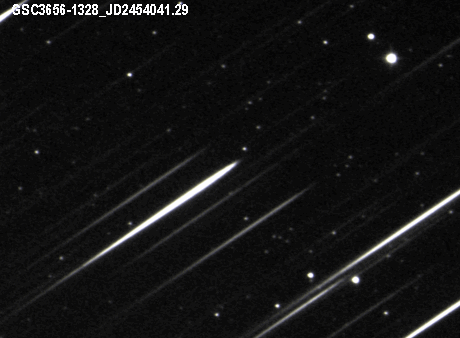
VAR CAS 06 (GSC3656-1328) - A GRAVITATIONAL MICROLENSING EVENT?
LOW RESOLUTION SPECTRA 1st Nov - 10th Dec 2006
(Revised14th Dec 2006)
On 31st October 2006 the AAVSO issued a special notice concerning a new variable star in Cassiopeia discovered by S. Nakano, Sumoto, Japan which had brightened from 11.8 to 7.5 Vmag The star faded rapidly initially, returning to pre event brightness levels after approximately 20 days.
Starting on the evening of 31st Oct, a series of low resolution spectra were taken using the Star Analyser 100 l/mm transmission grating mounted in a slitless configuration in the converging beam of the VC200L with focal reducer (approx f6.4) and a monochrome SC3 modified webcam The spectra were corrected for instrument response based on measurements of Delta Cas (Telluric lines were not subtracted) all spectra were normalised to the continuum at 550nm Vmags for comparison were taken from the AAVSO database. A final spectrum was taken 10th Dec after the star had returned to the pre event brightness level
BLINKED IMAGES OF SPECTRA TAKEN 1st Nov and 10th Dec 2006

The image shows the spectrum and zero order image of the star. (The slight movement of the background stars and spectra are due to a small change in orientation of the grating relative to the camera between the observations)
ALL SPECTRA
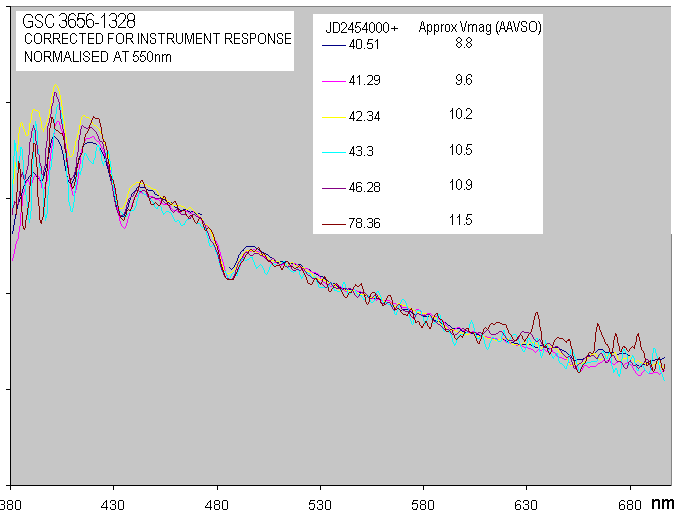
The spectra are all very similar and appear typical of an A type star with H Balmer absorption lines and no sign of emission lines which might be expected from a Nova outburst.
Comparison of spectrum taken 2nd Nov with library spectra
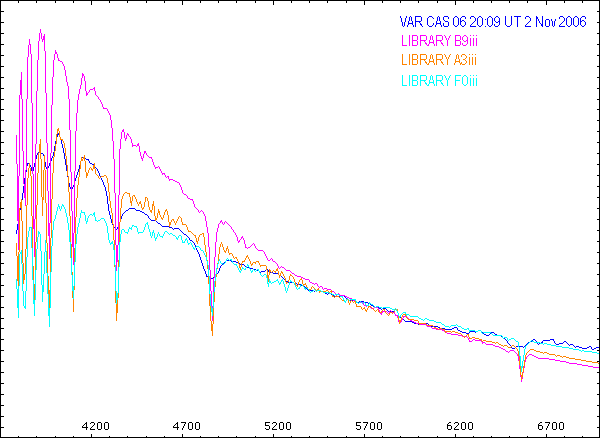
COMPARISON OF SPECTRA NEAR MAXIMUM AND AFTER RETURN TO PRE EVENT BRIGHNESS
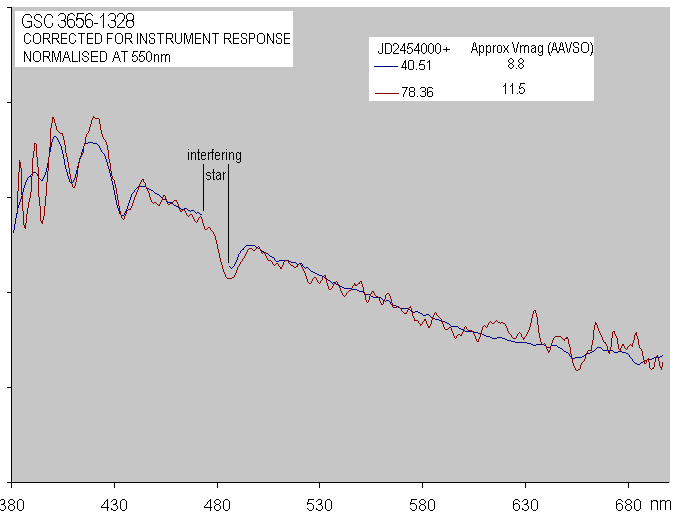
With this slitless setup there is a risk of contamination from zero order images and spectra from other stars in the field. (This is the reason for the gap in the JD+40.51 spectrum. The grating orientation was altered to avoid this in later spectra) The signal/noise also deteriorates dramatically at the extreme ends of the spectrum as the instrument response drops and the spectrum becomes buried in the background. Small errors in background subtraction can also lead to significant systematic errors in these areas for the same reason.
REPEAT SPECTRA TAKEN 6th Nov
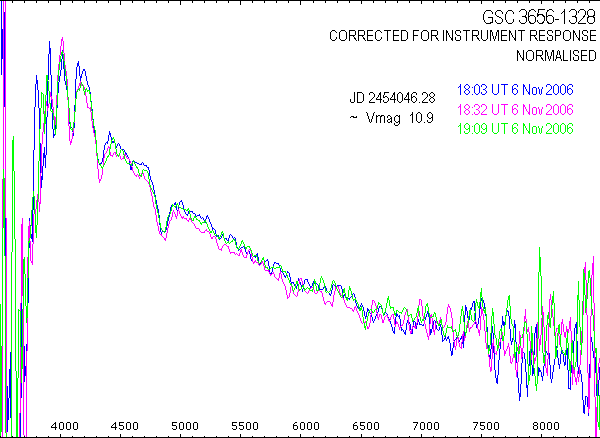
INSTRUMENT RESPONSE AND SPECTRUM VARIABILITY FROM 6th Nov DATA
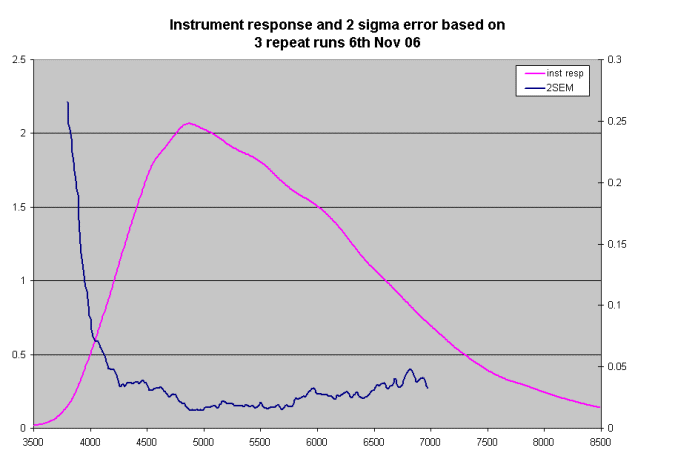
The graph below shows the spectra with +-2sigma lines based on the repeat observations from 6th Nov. Each observation will have its own errors depending on the brightness of the target and conditions on the night but the variation between spectra with wavelength follows the 6th Nov error so differences between the spectra are probably not significant.
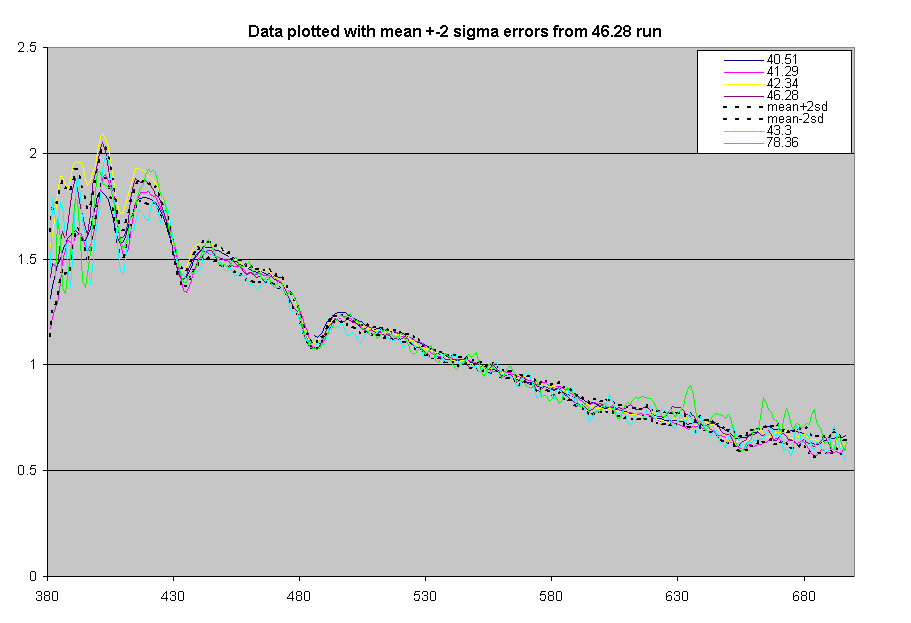
WAS THIS A GRAVITATIONAL MICROLENSING EVENT?
The absence of any change in the spectrum, the lack of evidence of any previous variability, the rapid drop in brightness post maximum and increasing evidence of the symmetry of the light curve based on a number of pre-event images led to the hypothesis that a this could be a rare example of a gravitational microlensing event with the increase in brightness caused by an object passing in front of the star and bending the light. See Astronomer's Telegrams (ATEL) 931 942 943 However the probability of such an event occurring so close is extremely small. The alternative that it is some as yet unidentified mechanism mimicking a microlensing event is also of interest to project teams surveying for such events.
LINKS TO VARIOUS PHOTOMETRIC ANALYSES
http://www2.hawaii.edu/~linnolt/VCAS06.html
http://stupendous.rit.edu/tass/technotes/tn0104.html
http://spiff.rit.edu/richmond/tass/other_cas_06/other_cas_06.html